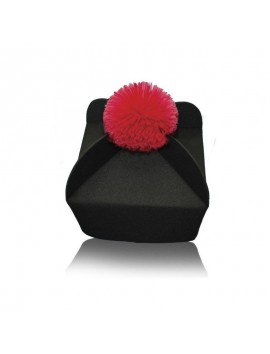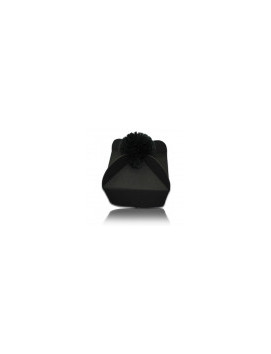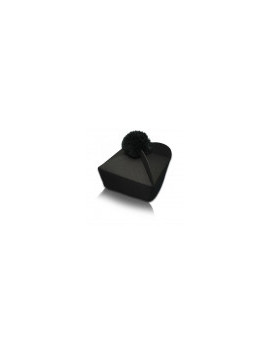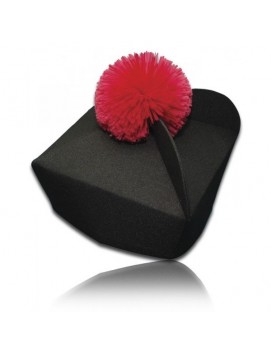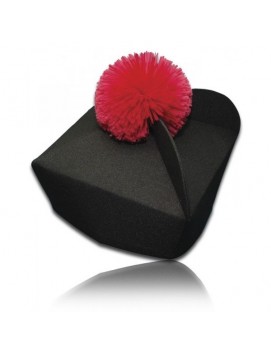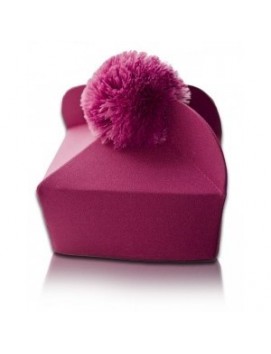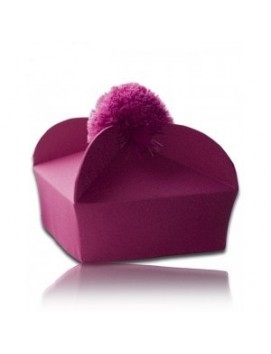No products
Birettas
A clerical biretta is a type of headgear worn by Christian clergy members, especially Roman Catholic clergy, as well as some Lutheran and Anglican clergy. It is a square cap with three or four ridges or peaks on its upper surface. The biretta is made of various materials, such as silk, velvet, or wool, and is often decorated with a pom-pom or tassel on top. The biretta is worn during liturgical functions, such as processions, Benediction of the Blessed Sacrament, and other important ceremonies. The use of the biretta has not been abolished as a result of changes in the regulation of clerical dress and vesture following the Second Vatican Council and still remains the correct liturgical headgear for those in Holy Orders whilst "in choir", but its use has been made optional. Its use is prevalent among bishops and cardinals, and less so among other clergy. The biretta is also worn as academic dress (but not liturgically) by those holding a doctoral degree from a pontifical faculty or pontifical university or faculty. The biretta is a symbol of the reverence and respect given to the clergy member's role in the church. Birettas can be purchased from various online retailers, and can be custom-made to fit the clergy member's style and preferences.
A clerical biretta is a type of headgear worn by Christian clergy members, especially Roman Catholic clergy, as well as some Lutheran and Anglican clergy. It is a square cap with three or four ridges or peaks on its upper surface. The biretta is made of various materials, such as silk, velvet, or wool, and is often decorated with a pom-pom or tassel on top. The biretta is worn during liturgical functions, such as processions, Benediction of the Blessed Sacrament, and other important ceremonies. The use of the biretta has not been abolished as a result of changes in the regulation of clerical dress and vesture following the Second Vatican Council and still remains the correct liturgical headgear for those in Holy Orders whilst "in choir", but its use has been made optional. Its use is prevalent among bishops and cardinals, and less so among other clergy. The biretta is also worn as academic dress (but not liturgically) by those holding a doctoral degree from a pontifical faculty or pontifical university or faculty. The biretta is a symbol of the reverence and respect given to the clergy member's role in the church. Birettas can be purchased from various online retailers, and can be custom-made to fit the clergy member's style and preferences.
The clergy biretta is a distinctive piece of headwear that has been part of the clerical attire for centuries, symbolizing the authority and commitment of the clergy to the Church. Let's delve into the history, symbolism, and current use of this unique headgear.
The History of the Clergy Biretta
The biretta's origins are somewhat uncertain, but it is mentioned as early as the tenth century. It likely evolved from the academic cap of the high Middle Ages, which was a soft, square cap. This academic cap is also the ancestor of the modern mortarboard used in secular universities today. The biretta became more widely used as an ecclesiastical vestment after the synod of Bergamo in 1311.
Symbolism and Design
The biretta is a square cap with three or four peaks or horns, sometimes surmounted by a tuft or pom. The three peaks on the biretta worn by lesser clergy represent their threefold ministry: teaching, sanctifying, and governing. For bishops, the four peaks symbolize their jurisdiction over a diocese. The color of the biretta often denotes the rank of the wearer within the Church hierarchy: cardinals wear scarlet red, bishops wear violet, and priests, deacons, and seminarians typically wear black.
Current Use and Variations
Today, the biretta is used by all ranks of the Latin Church clergy, from cardinals to priests, deacons, and seminarians. Its use is not as widespread as it once was but is still prevalent among bishops and cardinals, and less so among other clergy. The biretta is also worn as academic dress by those holding a doctoral degree from a pontifical university, although not liturgically.
Clergy Biretta in Liturgical Functions
The biretta is worn during liturgical functions such as processions and when seated, as well as during certain acts of jurisdiction like giving absolution in confession. It is not worn during the celebration of the Mass itself but is commonly worn during processions and formal prayers said at a grave.
FAQs
Who wears a clergy biretta?
Clergy birettas are worn by Roman Catholic cardinals, bishops, priests, deacons, and seminarians, as well as some Anglican and Lutheran clergy.
What does the clergy biretta symbolize?
The clergy biretta symbolizes the wearer's authority, knowledge, and commitment to the Church. The peaks represent the threefold ministry of teaching, sanctifying, and governing, or the jurisdiction over a diocese.
Can a layperson wear a biretta?
While technically possible, it is very uncommon and not part of lay dress. The biretta is traditionally a liturgical vestment worn by members of the clergy.
Do priests still wear birettas?
Yes, many priests still wear birettas, especially during traditional and solemn liturgical celebrations.
In conclusion, the clergy biretta is a rich symbol of the clerical state, steeped in history and tradition. While its use has become optional and less common in the wake of liturgical reforms, it remains a powerful visual representation of the clergy's role within the Church.

